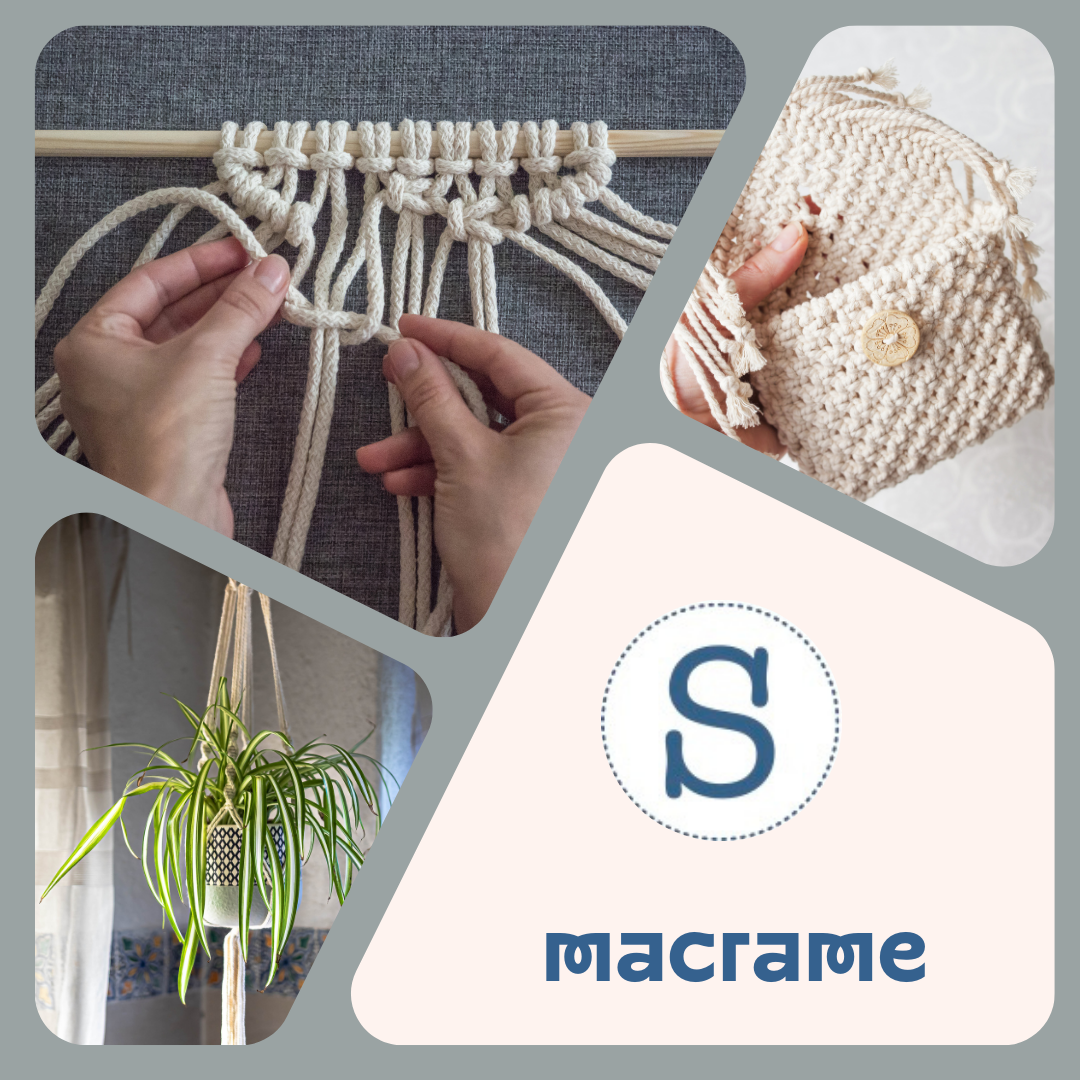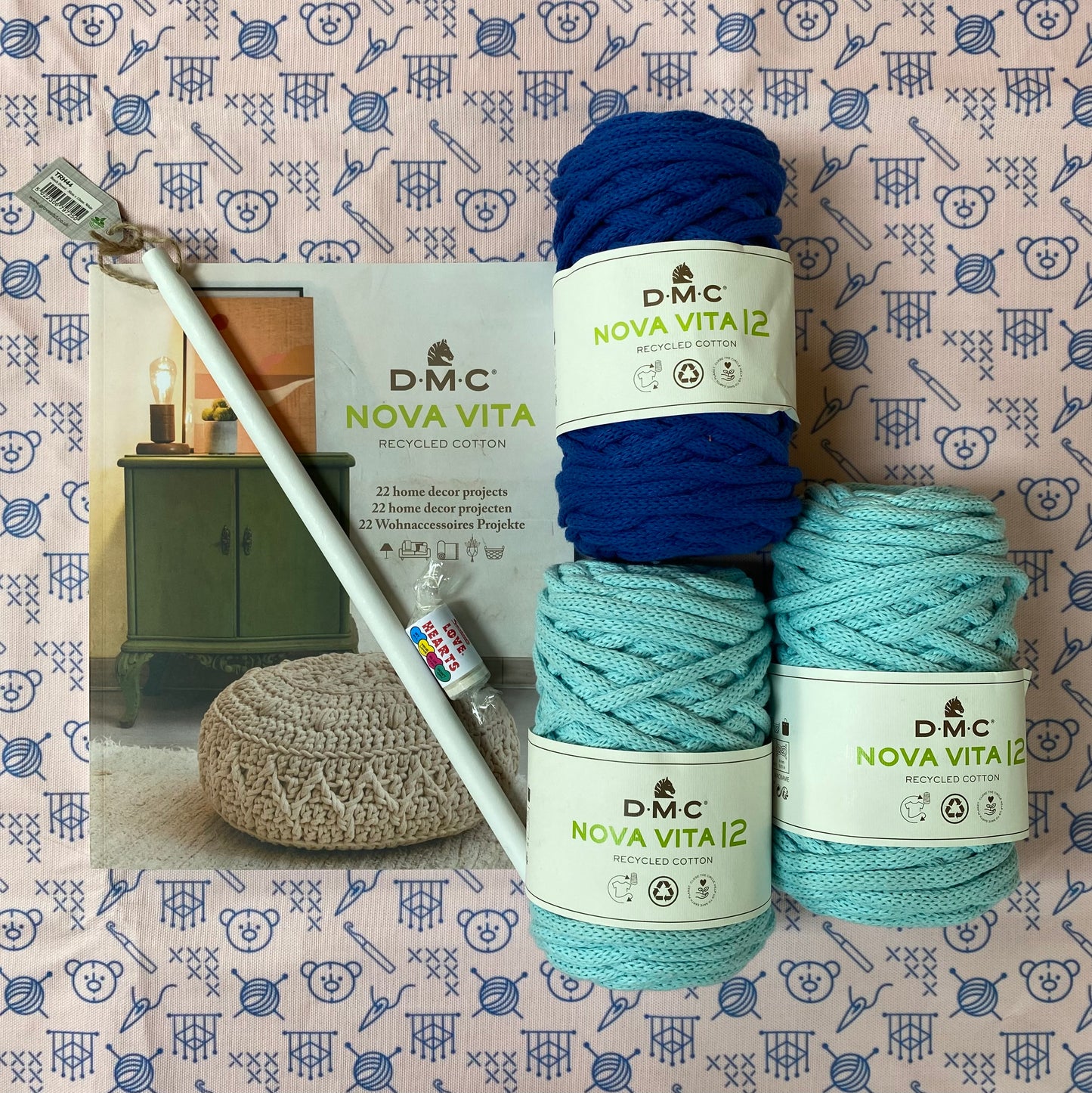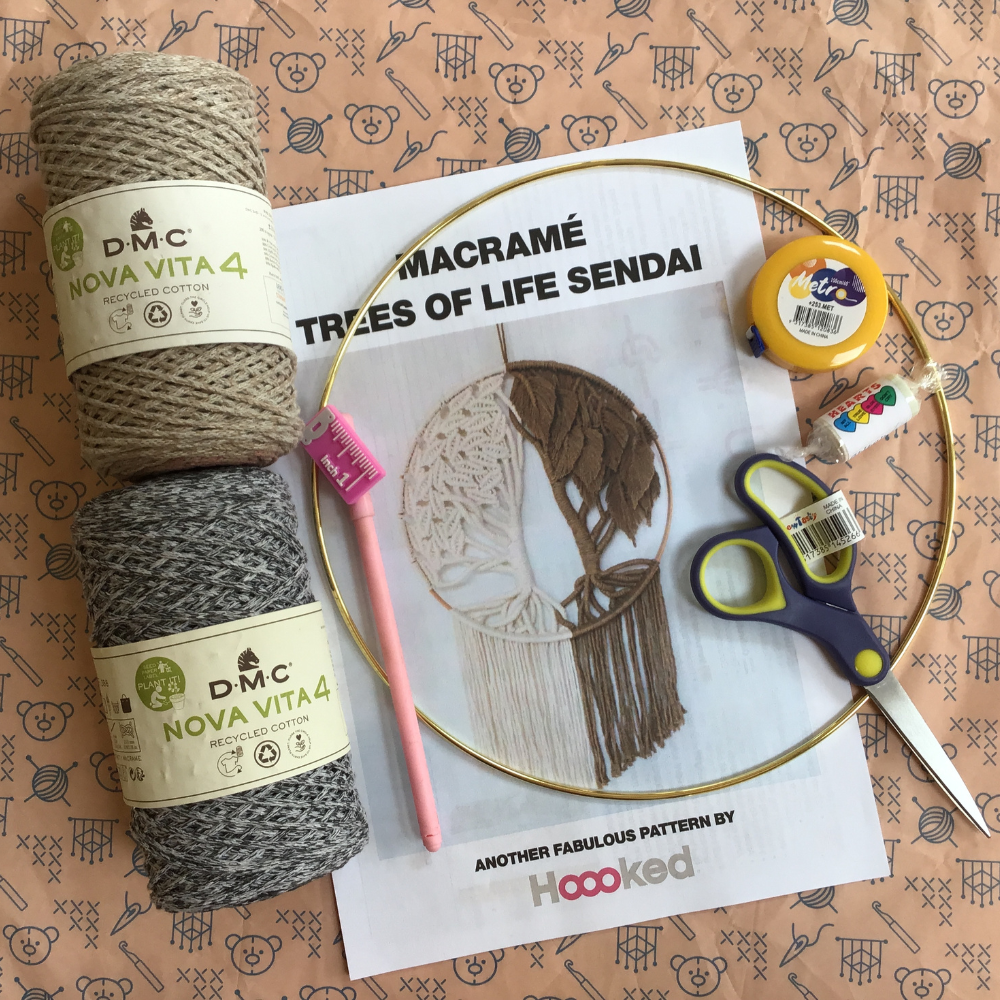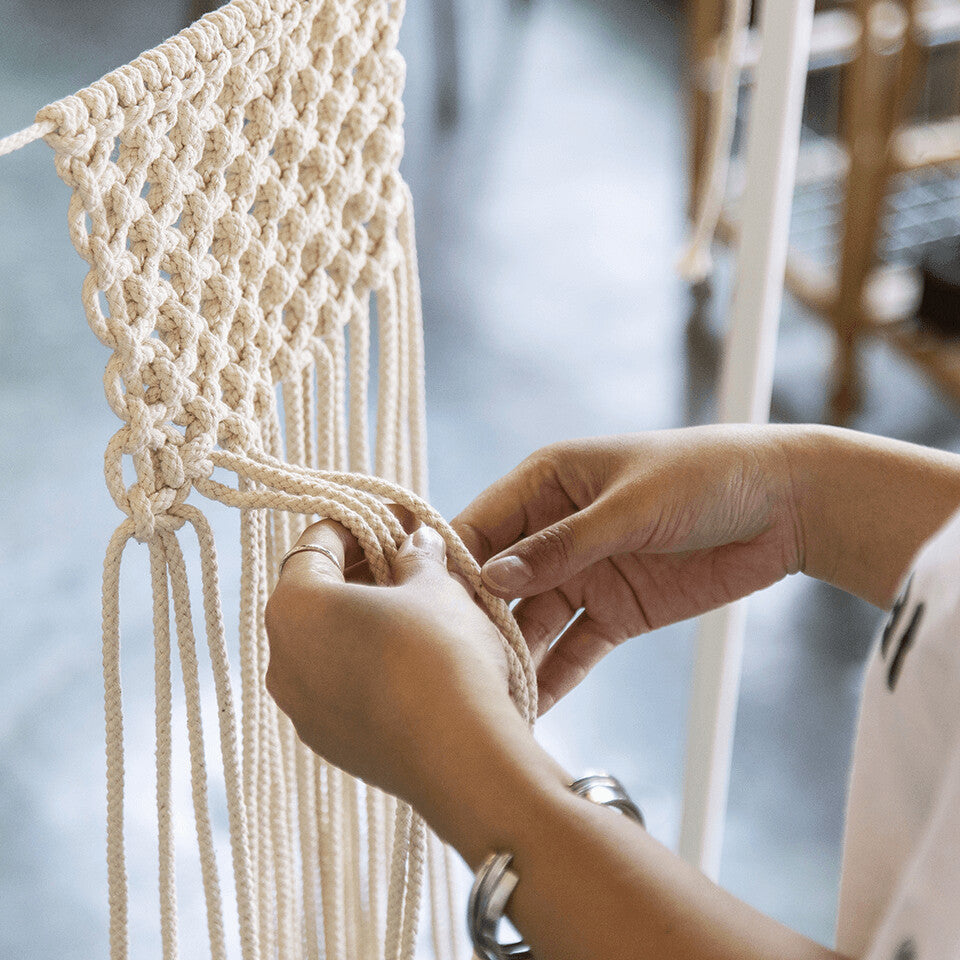
What is Macramé?
Macramé is a crafting technique that uses knots to create various textiles. Since this art form has regained popularity in recent years, crafters and artists are coming up with innovative ways to take macramé beyond the basic plant hangers and wall hangings, although that is a great place to start.
stitchkitshop
Macramé Stitch Kit




FAQs
What's the difference between macramé and crochet?
Macramé is made with multiple strings, tied in decorative knots, without the use of tools other than your fingers. Crochet is done with a single thread, drawn through previously made loops with a crochet hook.
Is macramé coming back in style?
Though many people associate macramé with 1970s crafty creations (often involving owls), it in fact has a long, rich history as both a decorative and functional art form. Today macramé is back in favour, revitalized by modern makers who are putting their own stamp on this age-old craft.
Is macramé hard to learn?
No, Although it looks challenging, it is a simple and fun craft that anyone can learn to do. Once you learn a few basic knots, you will be able to create beautiful macramé projects.
Is macramé an expensive hobby?
The cost of your macramé project is going to depend on the size of your piece and therefore the amount of materials you will need to purchase. It will also depend on the quality of materials you use. Making your macrame pieces will almost always be less expensive than purchasing already made macramé products.
What do I need to get started with macramé?
To give you an idea, my macramé plant hanger required approximately 6 meters of 3 mm 3 strand cotton rope.
1. Cotton macramé cord (rope)
2. Wood or metal dowel, or equivalent tree branch or drift wood (for a more organic natural look), if you're doing wall art.
3. Hanging ring if creating a plant hanger.
4. Scissors.
5. Tape measure.
What does the word macramé mean?
An elaborately patterned lace like webbing made of hand-knotted cord, yarn, or the like, and used for wall decorations, hanging baskets, garments, accessories, etc. the technique or art of producing macramé.
Where does Macramé come from?
Many ancient cultures feature knot craft, but macramé weaving has its popular roots in 13th-century Arabic culture. Spreading to Europe via Moorish southern Spain, the Spanish word macramé is derived from the Arabic migramah, believed to mean “striped towel”, “ornamental fringe” or “embroidered veil”.
What yarn is best for macramé?
The list is endless but the most common materials are:
• JUTE is a sturdy, natural fiber with nice texture and colour.
• FELTED WOOL is a fun, bulky and soft statement fiber.
• POLYPROPYLENE is a durable, long-lasting rope that will hold up well in the elements which makes it a good choice for outdoor projects.
What do you use for macramé?
Nylon, silk, satin rayon and cotton were the suggested materials to use. You can also use leather because it softens after a period of use. The thickness of the macramé cord is usually indicated in millimetres (mm).
What is the point of macrame?
Macramé was used to make household items such as tablecloths, bedspreads and curtains. Though the craze for macramé faded, it regained popularity during the 1970s as a means to make wall hangings, articles of clothing, bedspreads, small jean shorts, tablecloths, draperies, plant hangers and other furnishings.
Our Other Crafts
-

Amigurumi
Learn More -

Cross Stitch & Embroidery
Learn More -

Knitting
Learn More -

Crochet
Learn More -

Sewing & Patchwork
Learn More





